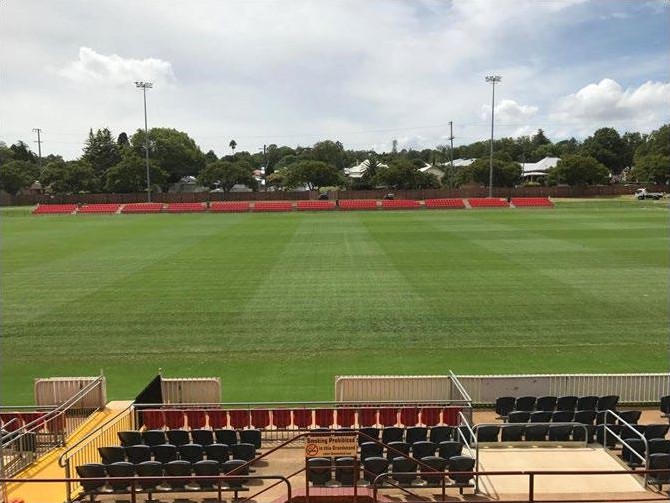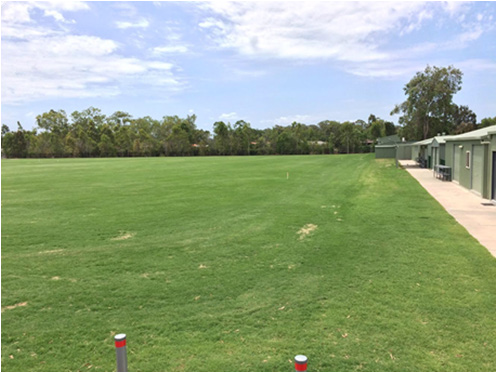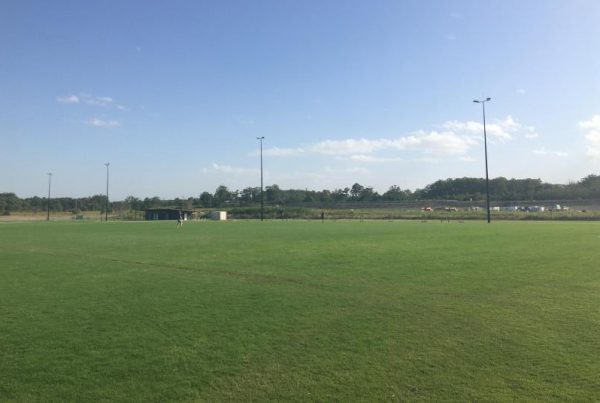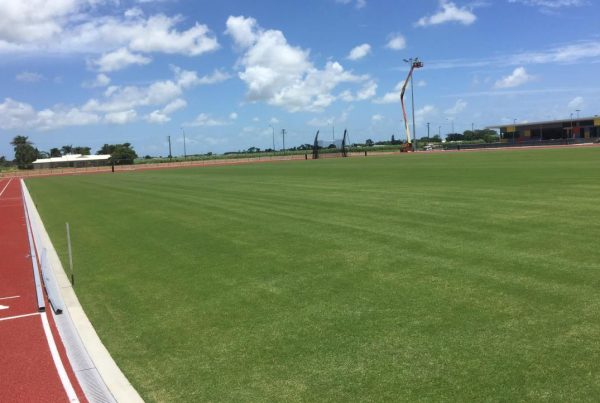
In sustainable landscaping, turf emerges as a prominent ally, offering aesthetic appeal and significant environmental benefits. Beyond its virtual charm, when thoughtfully incorporated into outdoor spaces, turf becomes a key player in fostering a greener and more sustainable planet.
The carpet of grass contributes to the air we breathe, the temperature, and also the energy conservation as some of the things it contributes to. Our exploration into the world of turf reveals a landscape not just pleasing to the eye but a dynamic way to promote a healthier ecosystem.
Join us as we dive deep into the world of advantages that turf brings to the environment, transforming lawns into positive change.
Oxygen Boost and Carbon Dioxide Reduction
One of the most beneficial things about having turf grass is the oxygen boost to lets you breathe freely. Your lawn, often overlooked as a collection of oxygen-producing plants, is a powerhouse in the air.
Like all plants, the grass in your lawn absorbs carbon dioxide and, through photosynthesis, releases the oxygen you breathe. A small 25-square-foot healthy lawn area generates sufficient oxygen daily to meet the needs of one adult, while also annually absorbing about 5 percent of the earth’s carbon dioxide, contributing to the fight against global warming.
Cleaner air and healthier soil
Beyond capturing carbon dioxide, lawns act as air cleaners, trapping pollutants like dirt, dust, and allergens. According to statistics in the United States turf grasses remove approximately 12 million tons of impurities annually, cleansing the air and returning pollutants to the soil.
Well-fed and cared-for lawns foster helpful microorganisms and create beneficial organic matter, promoting soil health and structure. A healthy soil foundation enhances the overall environmental impact of grassy landscapes.
Natural Cooling and Temperature Reduction
One of the amazing things about turf is that grass lawns naturally cool themselves through transpiration, a process where the grass lowers its temperature through evaporation when heated by the sun.
On sunny days, the air above concrete surfaces can be over 14 degrees hotter than the air above natural grass lawns. This cooling effect not only makes walking on grass pleasant in the summer but also benefits your home.
An average front lawn can have a cooling effect equivalent to almost nine tons of air conditioning. In contrast, artificial turf can reach temperatures over 80 degrees higher than natural grass under the same conditions.
Erosion Control and Water Quality Protection
What can be a really big benefit for lawn lovers is the powerful defense against erosion control. A healthy lawn has a great defense against soil erosion caused by water or wind. Green and healthy grass can exaggerate an impressive root system of nearly 300 miles. These roots anchor the soil, preventing erosion, while the grass blades shield it from the impact of rain and wind.
Moreover, the turf reduces overflow, minimizing the flow of water, soil, and pollutants from nearby roads into streams and storm sewers, during less severe rainfall.
With that being said, we must say that healthy grasses play a crucial role in absorbing water, filtering out pollutants like the ones in acid rain, and recharging groundwater reserves.
You can take a look at our turf varieties so we can show you exactly what it means to have nice and healthy grass in your home or field.
Allergy control
We have already spoken about the importance of mowing grass regularly and the way it benefits the grass. One of the also important things is that this way is effective in managing allergy triggers such as seeds, spores, and pollen from weeds.
The act of mowing helps control populations of biting insects that could not benefit the grass. It’s crucial to maintain the lawn well, considering that weed seeds are naturally present in the soil. When patches open up in a lawn, weeds can emerge, potentially causing allergy issues.
It is crucial to know that certain weeds, like clovers, may attract bees, whose stings can lead to allergic reactions.
Therefore, keeping a well-maintained lawn not only increases its aesthetic appeal but also contributes to a healthier outdoor environment by minimizing potential allergy triggers.
Quiet and Soothing Atmosphere
The surface properties of turf grass contribute significantly to reducing both noise and glare in outdoor spaces. Unlike bare ground, gravel, or pavement, the surface of turf grass excels at absorbing sounds, creating a quieter environment, which helps in enjoying and drinking your coffee in peace.
Our suggestion to maximizing these benefits is to consider integrating a landscape design that incorporates turf grass, along with bushes and trees. This not only improves the visual appeal but also fosters a tranquil and peaceful atmosphere by minimizing unwanted noise and glare.
Fun and Fitness on Turf
Last but not least, turf grass provides an affordable and safe surface for various recreational activities suitable for both kids and adults. Whether it’s family picnics, social gatherings, or casual backyard sports, these shared experiences create lasting bonds among community members.
So when we say that we are providing services and turf we also mean bonding between people and families. High-quality parks and sports fields not only instill pride in the community but also serve as hubs of entertainment and interest.
Engaging in recreational activities and leisure on turf grass contributes to both mental and physical well-being, a crucial aspect in today’s society, particularly in densely populated urban areas.
Conclusion
In the broad canvas of eco-friendly landscaping turf grass emerges as a hero, contributing not only to the visual side of outdoor spaces but also to the bigger aspect of the environment.
As we have already mentioned, beyond its role as a living carpet, turf plays a crucial part in reducing carbon dioxide, capturing pollutants, and fostering biodiversity. It acts like an air purifier, temperature modulator, and erosion controller, showcasing its multifaceted benefits.
From noise reduction to providing a space for recreational activities, turf grass proves to be flexible in creating vibrant, healthy communities. Its impact extends beyond aesthetics, influencing physical and mental well-being.
As we step onto the grassy canvas, we join the movement toward a greener, more sustainable planet.
Visit our website and let us help you choose a turfed landscape, fostering a connection between nature and community for a healthier and happier future.




